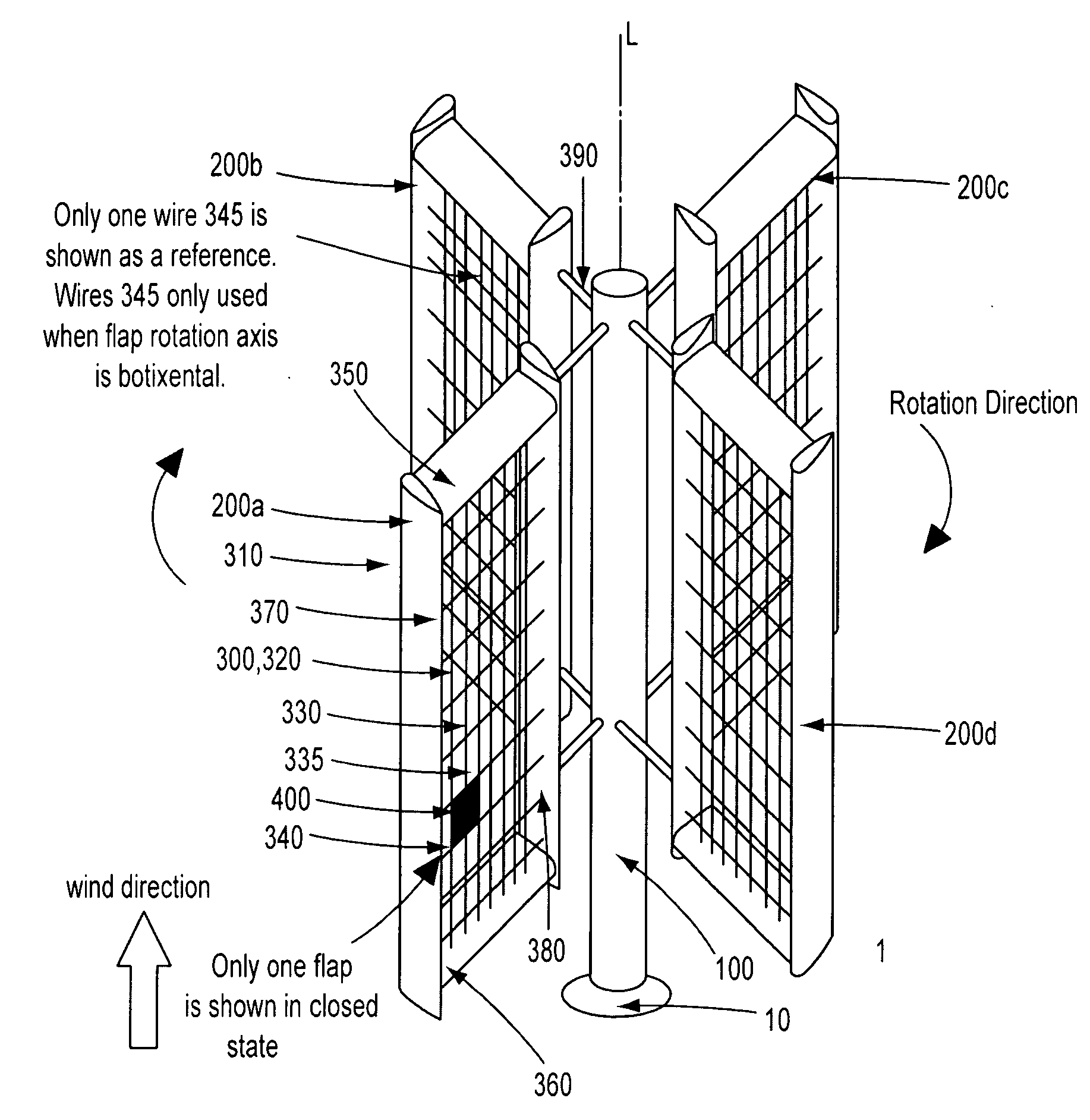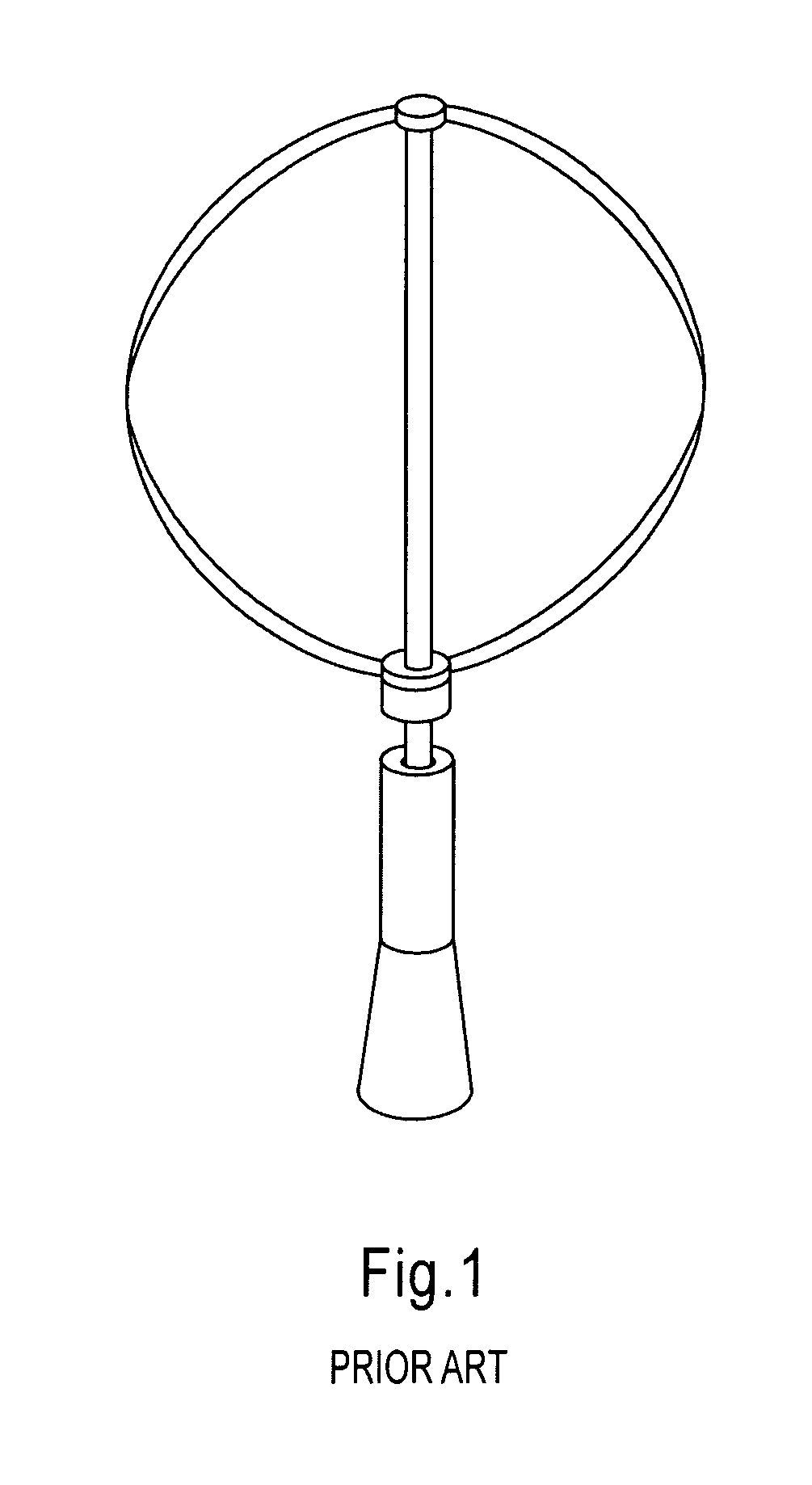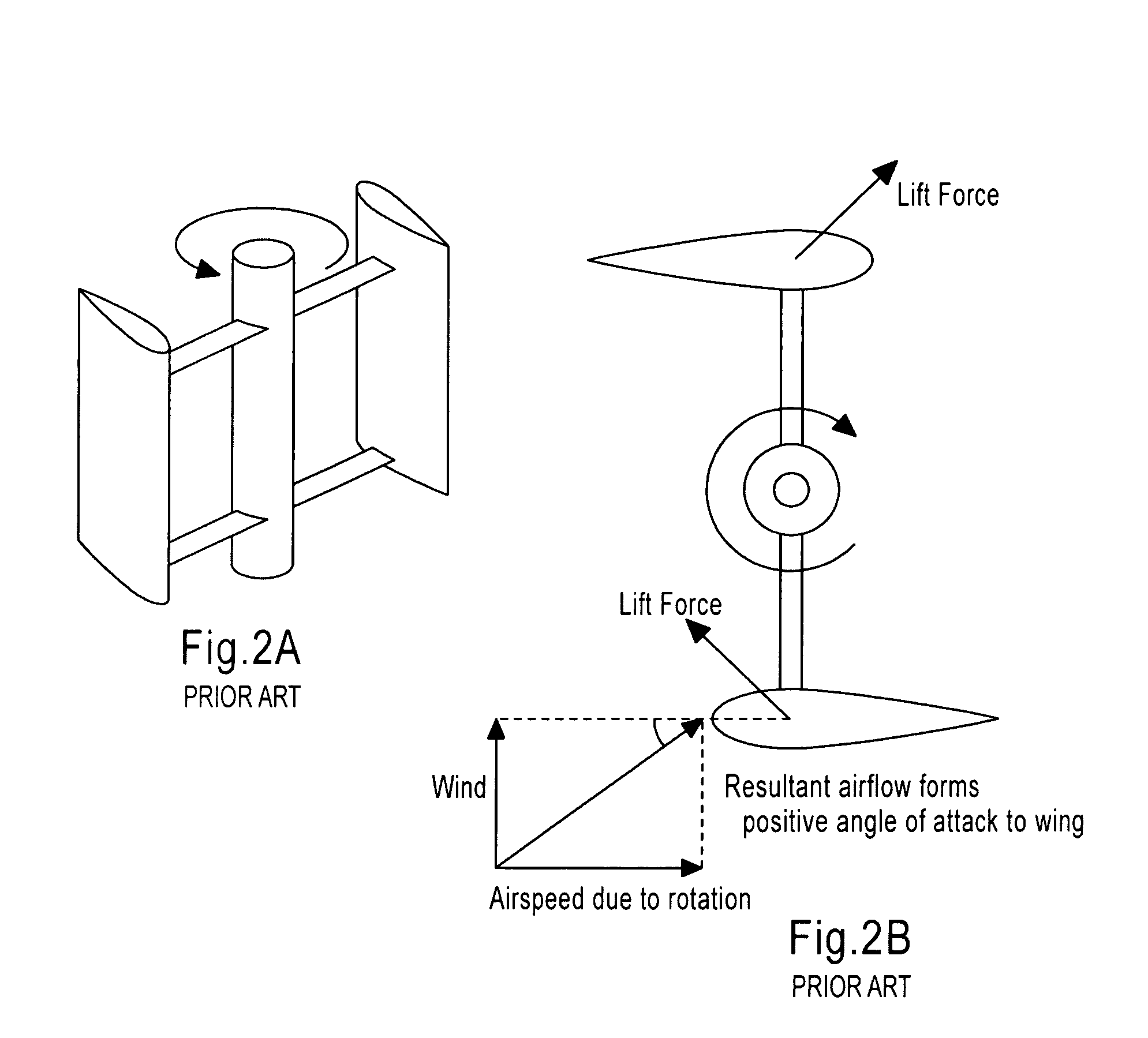Check valve turbine
a valve turbine and valve body technology, applied in vessel construction, renewable energy generation, greenhouse gas reduction, etc., can solve the problems of difficult choices, adverse effects on marine life, and detrimental effects on oxygen producing vegetation
- Summary
- Abstract
- Description
- Claims
- Application Information
AI Technical Summary
Benefits of technology
Problems solved by technology
Method used
Image
Examples
Embodiment Construction
[0071]FIG. 9 illustrates an exemplary embodiment of the present invention. The VAWT assembly 1 of the present invention includes an assembly base 10, a vertical member or main shaft 100 coaxial to an axis L of the assembly 1 and a plurality of sails 200a, 200b, 200c and 200d. Although four sails 200a-d are illustrated, it is within the scope of the present invention to include any number of sails ranging from two (2) to n, wherein n is an integer greater than 2 and less than 721, depending on the design and intended use of the VAWT. Because each sail 200a-d is structurally identical to one another, only one sail, 200a will be described herein to avoid redundancy.
[0072]The sail 200a has a grid like structure to form a sail base which supports a plurality of moving flaps 400. It is within the scope of the present invention to include any type of suitable grid base that is able to support the moving flaps 400. In FIG. 9, only one flap 400 is shown in a closed state. While not intended ...
PUM
 Login to View More
Login to View More Abstract
Description
Claims
Application Information
 Login to View More
Login to View More - R&D
- Intellectual Property
- Life Sciences
- Materials
- Tech Scout
- Unparalleled Data Quality
- Higher Quality Content
- 60% Fewer Hallucinations
Browse by: Latest US Patents, China's latest patents, Technical Efficacy Thesaurus, Application Domain, Technology Topic, Popular Technical Reports.
© 2025 PatSnap. All rights reserved.Legal|Privacy policy|Modern Slavery Act Transparency Statement|Sitemap|About US| Contact US: help@patsnap.com



